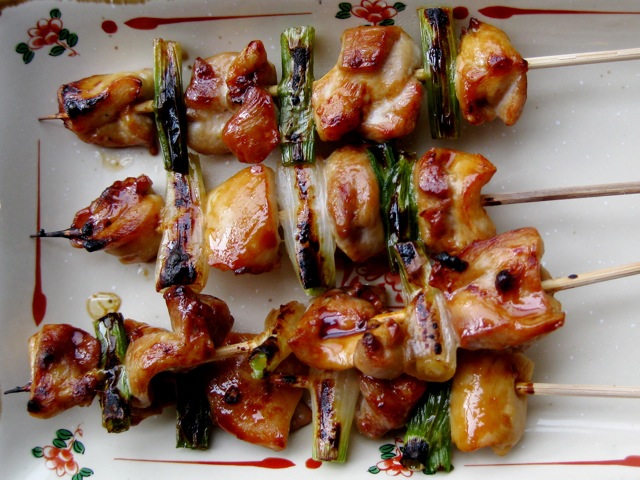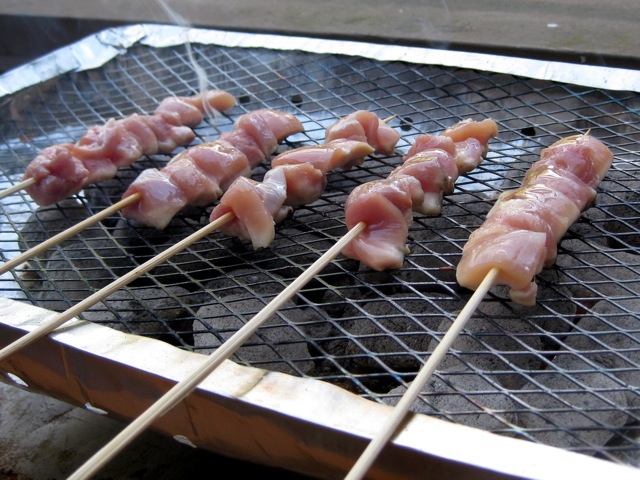
reference-image, l
(article, Matthew Amster-Burton)
[%pageBreakSettings nobreak=true] [%adInjectionSettings noInject=true] After weighing in two months ago on the relative merits of electric and gas burners, I promised to tell you about my adventures in induction cooking, which uses magnets to heat up the pan. [[block(sidebar). h1.Featured recipes]] The adventures were limited, but I found very little about induction cooking to recommend. I borrowed an induction hot plate; a full induction cooktop might perform differently. I'm not going to name the manufacturer of the unit I tested, because it's a typical unit whose shortcomings are shared by other manufacturers. Strike 1 against the magnet method: Induction cooking is a scheme to get you to replace all your cookware. Induction requires the bottom of your pot to be magnetic. I grabbed a fridge magnet and assigned my daughter, Iris, to go around sticking it on things. Only the cast-iron pans passed the test. But they heated up slowly on the induction burner. The manufacturer explained that in addition to a magnetic material, the bottom of the pan should be very flat. So they sent me one of their own induction-compatible pans, which retails for more than $200. Ouch. Strike 2: Induction cooking is loud. The burner I used had a vent fan running at all times. It also caused the cooking pot to make a jangling metal noise. The two noises together sounded like an overheating robot. Strike 3: Induction cooking features controls that only an overheating robot could love. All induction surfaces, as far as I can tell, use the same plus/minus touch controls for adjusting the heat. One of the reputed advantages of induction cooking — and I found this to be true — is that it's as responsive as gas. But if you're searing at power level 9 and want to turn the heat down to a simmer, you have to punch the button until you get down to power level 2 or so. It's like using an off-brand MP3 player. [%image reference-image float=right width=400 caption="Yakitori ready to eat."] I could offer a few more strikes, but for me, induction is already out. I spent two weeks cooking with the thing so you don't have to. If you're an induction fan, please tell me what I'm missing. All this magnetic futility got me hungry for some real cooking. You know, like meat on a stick over hot coals. Several weeks ago, Iris and I took a trip to Japan. People have asked us what we ate on the trip. Tempura? Yes, once. Sushi? A couple of times. Gyoza? Maybe twice. In fact, much of what we ate was meat on a stick. We ate it in an alley on the banks of the Kamo river in Kyoto. We ate it at a chain restaurant in Tokyo, then at a local bar the following night. Meat grilled on a stick is called kushiyaki in Japanese. You can get many types of grilled meat, but the most popular is definitely chicken, known as yakitori. We're talking every part of the chicken here, too. Iris and I searched the chicken high and low and couldn't find a part that didn't grill up nicely. Chicken skin? You bet. Thigh? Indeed. Heart? Heartily. And then there was bonchiri, chicken tail. This is the fatty bit known to gourmands as the Pope's nose and to anatomists as the pygostyle. The cook took a skewer of bonchiri, grilled it over charcoal, brushed it with tare (similar to teriyaki sauce), and put it back on the grill to caramelize the sauce. The result: the world's juiciest bit of chicken. My daughter ate four skewers. I think it was her favorite thing in all of Japan. I've had similar experiences with meat on a stick in Thailand, where grilled pork (moo ping) and chicken (satay) are common. At a Vietnamese restaurant, I always order bún thit nuong, grilled pork with rice noodles and herbs. And do we even need to get into kebabs? When it comes to grilled meat, the West still has a lot of catching up to do. [%image yakitorigrill float=right width=400 caption="Yakitori, or chicken grilled on a stick, is cooked over charcoal."] Back here in the States, I have resolved to lay in a supply of chicken tail by freezing one every time I buy a whole chicken. I have not purchased a Japanese yakitori grill complete with imported charcoal, although I have thought about it. Here are a few principles I've gathered for when the meat-on-a-stick urge strikes at home. Fattier is better. Duh. Not to get clinical, but the reason the chicken tail is so good is because it contains the bird's oily preen gland. As James Oseland says in his cookbook Cradle of Flavor, "I strongly urge you to use chicken thighs. Breasts have too little fat for grilling, resulting in a dry, unappealing satay." More on Oseland in a moment. When making yakitori, grill over charcoal and use the best chicken you can get. Yakitori isn't usually marinated, and the flavor comes primarily from charcoal heat and the chicken itself. Yes, there's often an inky, sweet sauce involved, but at yakitori places in Japan, you can choose from sauce or a sprinkle of salt. I've tried and failed to make good yakitori indoors. When indoors, make James Oseland's chicken-satay recipe, which broils brilliantly. The chicken is marinated in an intense aromatic paste — lemongrass, shallots, galangal, turmeric, palm sugar, all your best friends — and grilled or broiled at high heat. It's better than any satay I've had at a restaurant, and you can make it an entrée. Soaking bamboo skewers is unnecessary. Nobody in Asia does it. As John Thorne puts it in an essay on satay in his book [%amazonProductLink "Mouth Wide Open" asin=0865476284], "I have come across no evidence that satay sellers do this. They have an even simpler secret: they don't expose the skewers to the flame. Satay grills have a metal lip on both the front and back edges. This protects the exposed wood of the skewer at both ends . . . Such a lip is easy enough to improvise on your own grill with pieces of scrap metal or a folded strip of aluminum foil." Don't forget lamb. No meat tastes better charred over high heat than lamb, and no meat smells better getting there. Lamb satay is much less well known than chicken and beef, and that is too bad. Finally, to whet your appetite for a summer of Asian-inspired grilling, turn to the Atlanta Journal-Constitution's John Kessler, whose essay "Grilling: Short and Sweet" is sadly not online but is available in the book [%amazonProductLink "Best Food Writing 2003" asin=1569244405]: bq. I cut the meat thinly, steep it in a thick marinade that jumps with flavor, and let it char and sizzle with abandon over a direct flame. There's no better place to end my chicken tale. p(bio). [matthew.reviews@gmail.com "Matthew Amster-Burton"]* writes about cooking and culture from his home in Seattle.

reference-image, l

yakitorigrill, l